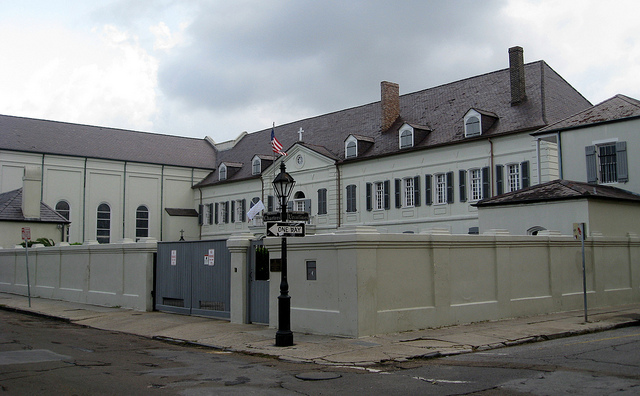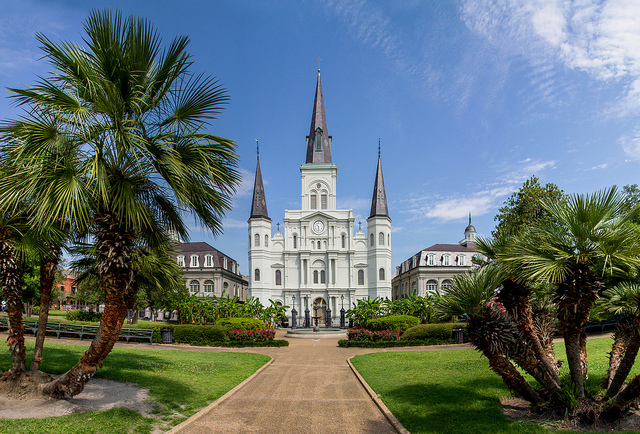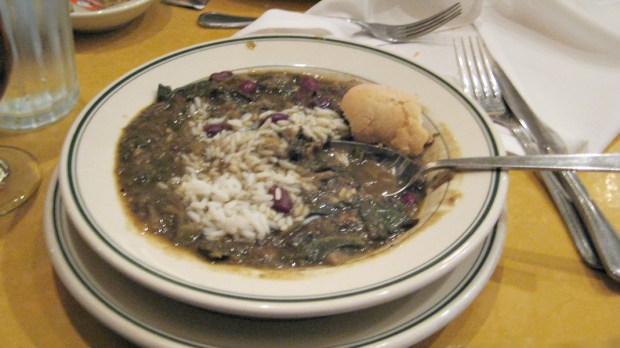Lenten Campaign 2025
This content is free of charge, as are all our articles.
Support us with a donation that is tax-deductible and enable us to continue to reach millions of readers.
After Fat Tuesday, Catholics in New Orleans do as Catholics all over the world do. They go to Mass on Ash Wednesday, give up meat on Fridays, make small sacrifices, and peform acts of penitence and prayer until Easter.
While the rest of the United States settles for frozen fish sticks and Filet-o-Fish sandwiches on Fridays, New Orleans enjoy crawfish and fresh seafood every day of the week without a whole lot of suffering, to be honest.
One traditional New Orleans Lenten dish is Gumbo Z’Herbes or green gumbo, a meatless version of the traditional Cajun dish.
Made with onions, peppers, garlic and greens, with a healthy splash of Tabasco, it is said that however many greens your Gumbo Z’herbes contains will be equal to the number of new friends you will make in the coming year. So load your stew up with kale, collards, parsley, mustard greens, dandelions, spinach — whatever you can get your hands on!
Funnily enough, a version cooked with meat – usually ham, chicken, and andouille sausages — is traditionally served on Holy Thursday. Try this recipe from Simply Recipes!
As the city celebrates 300 years of Catholicism this year, here’s a look at a timeline of New Orleans’ early Catholic history (Wikipedia):
1718 – La Nouvelle-Orléans founded by Jean-Baptiste Le Moyne de Bienville of the Mississippi Company. Jesuit missionaries serving French military outposts ministered to native Americans there.
1721 – Fr. Francis-Xavier de Charlevoix, S.J, toured New France from the Great Lakes to the Mississippi, and visited New Orleans. He described “a little village of about one hundred cabins dotted here and there, a large wooden warehouse in which I said Mass, a chapel in course of construction and two storehouses.”
1734 – Ursuline Convent built.
1752 – Modern-day Ursuline Convent building is finished, today the oldest and finest French Colonial building in the U.S.

1762 – French colony ceded to Spain.
1789 – St. Louis Cathedral built on the site of an earlier Catholic church.

1800 – Spain and France signed the secret Treaty of San Ildefonso stipulating that Spain give Louisiana back to France.
1803 – Napoleon sold Louisiana (New France) (which then included portions of more than a dozen present-day states) to the U.S. in the Louisiana Purchase. A French prefect, Pierre Clément de Laussat, who had only arrived in New Orleans on March 23, 1803, formally took control of Louisiana for France on November 30, only to hand it over to the U.S. on December 20, 1803.
1804 — In response to the concerns of the Ursuline Sisters about whether their Catholic convent and school would be permitted to continue under the terms of the Louisiana Purchase, President Thomas Jefferson wrote to assure them of religious freedom: “The principles of the constitution and government of the United States are a sure guarantee to you that it will be preserved to you sacred and inviolate, and that your institution will be permitted to govern itself according to its own voluntary rules, without interference from the civil authority.”

